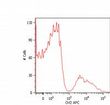USD 865.00
2 Weeks
Human IgG1 (Fc specific) mouse monoclonal antibody, clone NI 132 (HP 6186), Biotin
| Applications | To identify the presence of IgG1 in Human serum, other body fluids, cell and tissue substrates and to determine its concentration in techniques as ELISA, immunoperoxidase staining of cytoplasmic IgG1, and Immunoblotting. As a second step an avidin or streptavidin conjugate of the customer's choice have to be used. General Recommended Dilutions: Immunocytochemistry. Immunohistochemistry (Paraffin). Histochemical Use: 1/10-1/40. ELISA: 1/100-1/2000. Western blot: 1/200-1/4000. |
| Reactivities | Human |
| Conjugation | Biotin |






























































































































































































































































 Germany
Germany
 Japan
Japan
 United Kingdom
United Kingdom
 China
China





